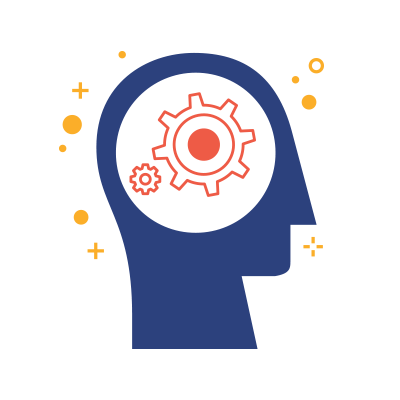We all think of gratitude as benefiting the person on the receiving end. However, is gratitude also good for the person who is grateful?
Robert Emmons, the world's leading scientific expert on gratitude, has been studying its effects and the results are very convincing. Dr. Emmons has studied more than one thousand people, from ages eight to eighty, and found that people who practice gratitude consistently report a host of benefits:
Physical
• Less pain
• Improved sleep
Psychological
• Higher levels of positive emotions
• More focused
• Greater confidence
Social
• Greater empathy
• More forgiving
• Increased connection with others
The social benefits are especially significant here because gratitude is a social emotion. You see, first, gratitude is an affirmation of goodness. We affirm that there is good in the world. This doesn’t mean that life is perfect; it doesn’t ignore challenges, negative situations, burdens, and hassles. However, when we look at life as a whole, gratitude highlights and emphasizes the positives in our life.
The second part of gratitude is figuring out what is contributing to the goodness in our lives. We recognize the sources of this goodness as being outside of ourselves. Gratitude involves a humble dependence on others. We acknowledge that other people and things give us many gifts that make our lives better.
What good is gratitude?
So what’s really behind Dr. Emmons’ research results—why might gratitude have these transformative effects on people’s lives?
I think there are several important reasons, but I want to highlight four in particular.
Gratitude allows us to celebrate the present. By focusing on being grateful our brains actually change. Our neurobiology shifts to one that makes us feel better and one that makes us a higher performer in life.
Gratitude blocks negative emotions that can destroy our happiness. A 2008 study by psychologist Alex Wood in the Journal of Research in Personality shows that gratitude can reduce the frequency and duration of episodes of depression. (This makes sense: You cannot feel grateful and have negative emotions at the same time.)
Grateful people are more stress resistant. There’s a number of studies showing that in the face of serious trauma, adversity, and suffering, if people have a grateful attitude, they’ll recover more quickly. So, in fact, a sense of gratitude is the most important when someone is going through challenging times.
Grateful people have a higher sense of self-worth. When you’re grateful, you feel that others are looking out for you—someone else has provided for your well-being, or you realize that you have a network of people in your life that value you and contribute that other to your life. Once you realize that other people have seen the value in you, you can transform the way you see yourself.
We want to feel more gratitude—and we want our students to do the same—because gratitude is so closely associated with happiness that the two are practically indistinguishable from one another. The opposite of gratitude is entitlement, which brings negative feelings like disappointment and frustration. But when we feel grateful, our world fills with positive emotions like love, compassion, enthusiasm, and confidence—and our satisfaction with life soars.
What we’ve learned from the gratitude interventions that don’t work is that one size definitely doesn’t fit all. So how can we help an adolescents become happier through gratitude?
The first thing to remember is that teenagers’ unique developmental task is to be independent: to break away from you, the adult who is asking you to appreciate what they do for you.
So every time teens take your advice—about how to be happier, or by following your instructions for practicing gratitude—they are setting themselves up to remain dependent on you. Which doesn’t feel good. Herein lies the problem.
This doesn’t mean that we should give up on teaching our students to feel and express more gratitude in their lives. Here are some suggestions for practicing gratitude with your students:
Let teens lead. One size doesn’t fit all when it comes to practicing gratitude—and a gratitude practice is going to be a lot less effective if it is seen as a chore or an assignment. So tell teens you want them to design a gratitude practice for themselves. And give them options to choose. for your whole family this year. credit, even if they come up with something you suggested weeks ago.
Use gratitude to cultivate the growth mindset in difficult times. What did you learn from that terrible experience? What good came out of it, despite the difficulty?
Be persistent. When teens feel authentic gratitude, it is a positive emotion for them just like for everyone else. When they create a gratitude practice that works for them, feelings of gratitude will become habitual, hopefully built into their daily lives
Below are some of the specific steps I like to recommend for overcoming the challenges to gratitude.
Gratitude Journal - Gratitude journals have been shown to be an effective approach to helping children be happier: One study had 221 sixth- and seventh-graders write down five things they were grateful for every day for two weeks. Three weeks later, these students had a better outlook on school and greater life satisfaction compared with kids assigned to list five hassles.
A Gratitude Journal can be just listing just five things for which you’re grateful every week. This practice works, I think, because it consciously, intentionally focuses our attention on developing more grateful thinking and on eliminating ungrateful thoughts. It helps guard against taking things for granted; instead, we see gifts in life as new and exciting.
Grateful Thoughts - Another gratitude exercise is to practice counting your blessings on a regular basis, maybe first thing in the morning, maybe at the end of the day. You can use concrete reminders to practice gratitude, which can be particularly effective in working with children. What are you grateful for today? You don’t have to write them down on paper.
Think Outside of the Box - Mother Theresa talked about how grateful she was to the people she was helping (the sick and dying in the slums of Calcutta) because they enabled her to grow and deepen her spirituality. That’s a very different way of thinking about gratitude—gratitude for what we can give as opposed to what we receive.







